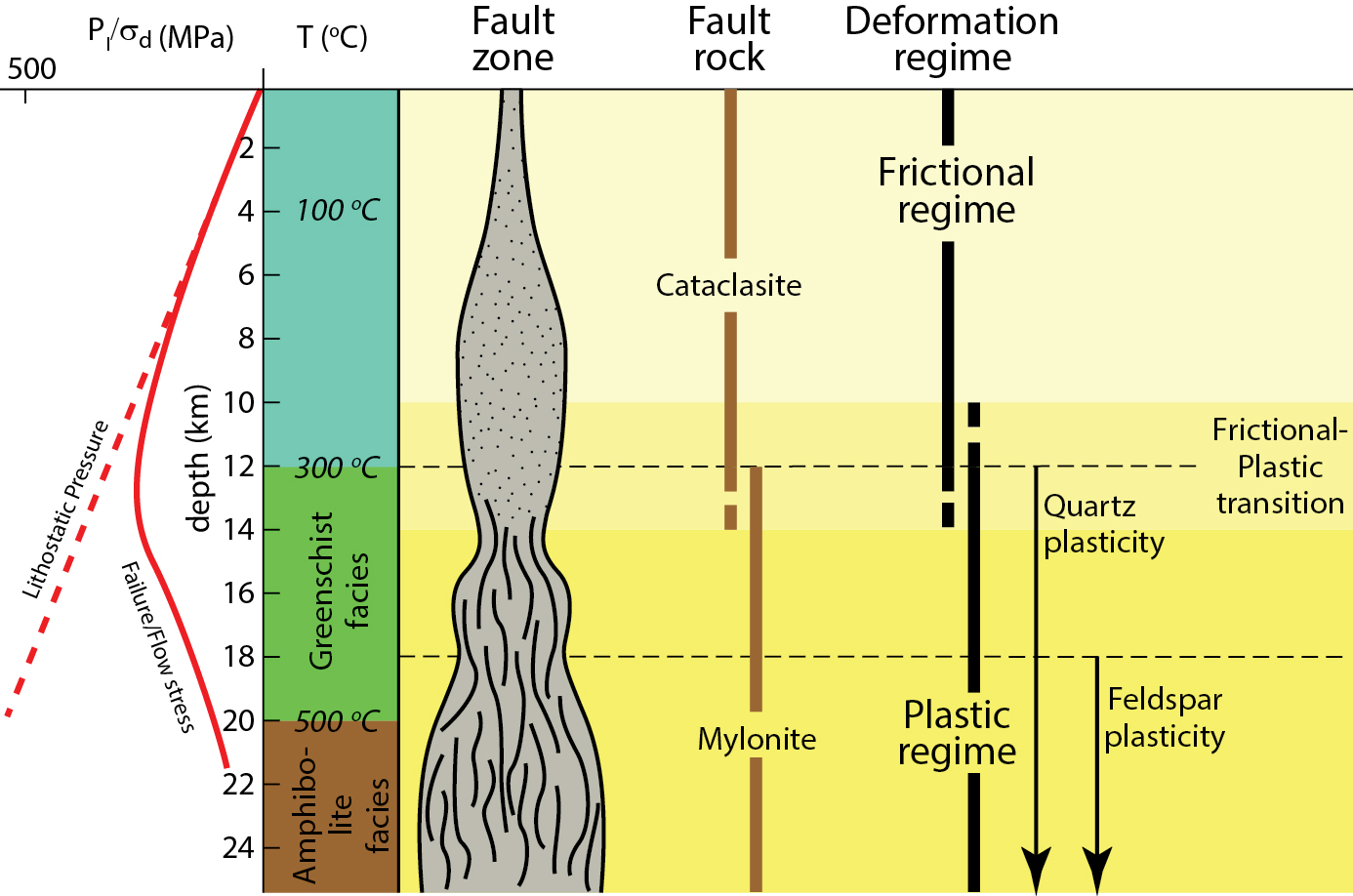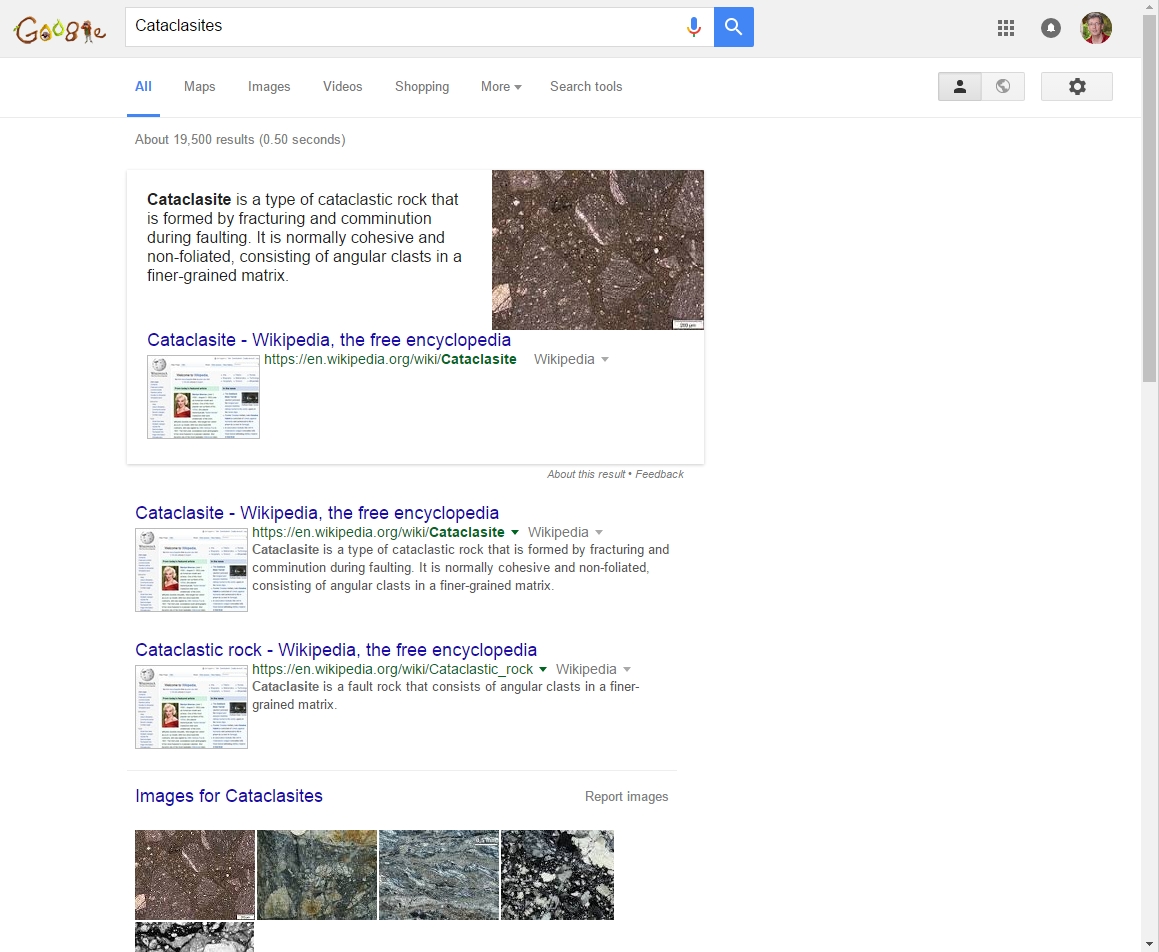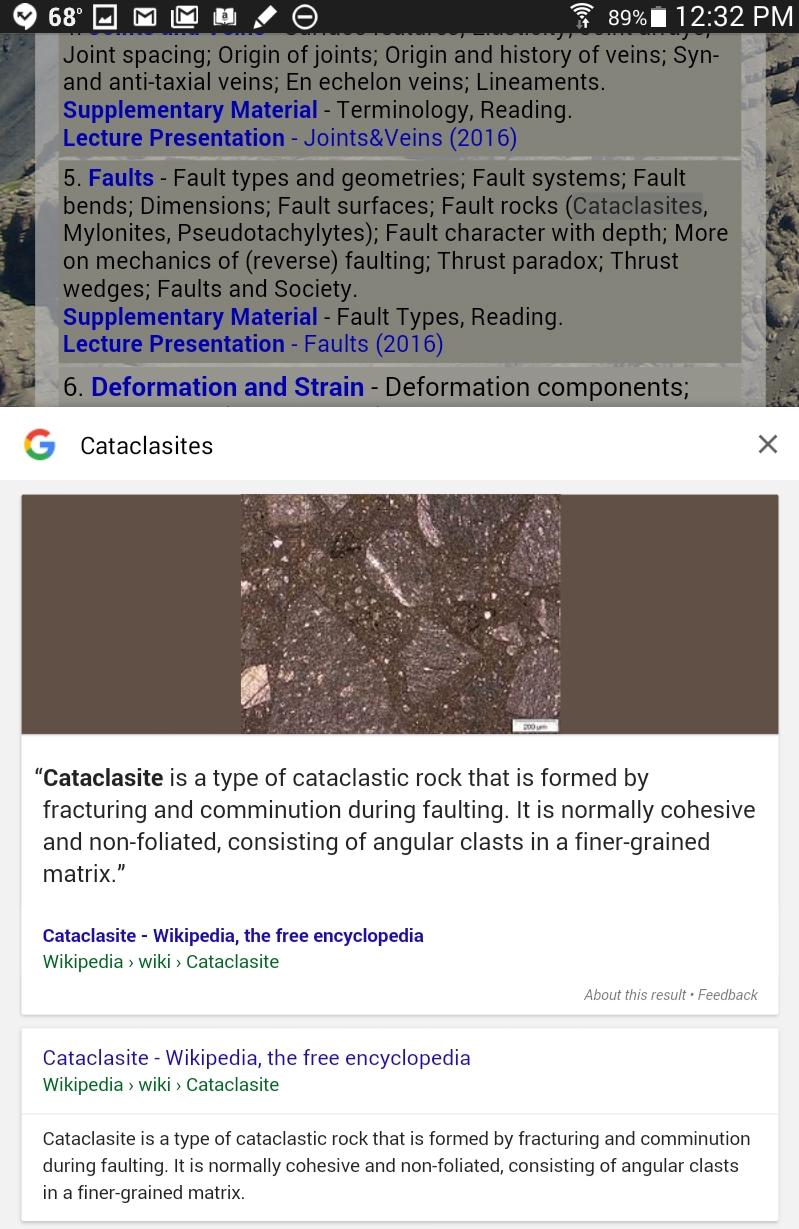|
Preface
Search, Customized and Internet
|
Processes in
Ben van der Pluijm
ISBN: 978-1-5323-0282-4; v3 © 2020 |
ORGANIZATION
Processes in Structural Geology and Tectonics combines fundamentals, observations and applications into a process-oriented approach to structural geology. The treatment differs significantly from prior offerings in this area, by focusing on integration of content. The material starts with examination of the behavior and properties of the upper crust, which is dominated by brittle structures, followed by considering a lower crust that deforms primarily by crystal-plastic processes. As such, the text is thematically organized by deformation regime, shown below as a function of depth with characteristic fault rocks, temperature, lithostatic and failure/flow stress conditions. Whole Earth structure and the tectonic settings of deformation structures today (shown below) and in the past are examined in the third block of the e-text.
The first chapter block emphasizes the stress-dependency of fracturing and friction, so force and stress and elastic properties of material are discussed. After fracture and friction criteria are established, (brittle) deformation structures and their processes are examined in more detail. This organization allows multiple paths to further exploration, such as the use of more sophisticated mathematical approaches (like matrix algebra) beyond vectors and trigonometry used here.
The second chapter block examines processes in the crust’s deformation regime where temperature dominates rock behavior and large, time-dependent strain can accumulate. Strain and strain rate are introduced here, and the rheologic property of viscosity is used to quantify the flow processes in this regime. Deformation in the plastic regime produces new rock elements, such as foliations and pervasively-sheared crust, which are included in the examination of related structures. As before, the organization readily allows deeper investigation into various topics, as well as more advanced mathematical treatment.
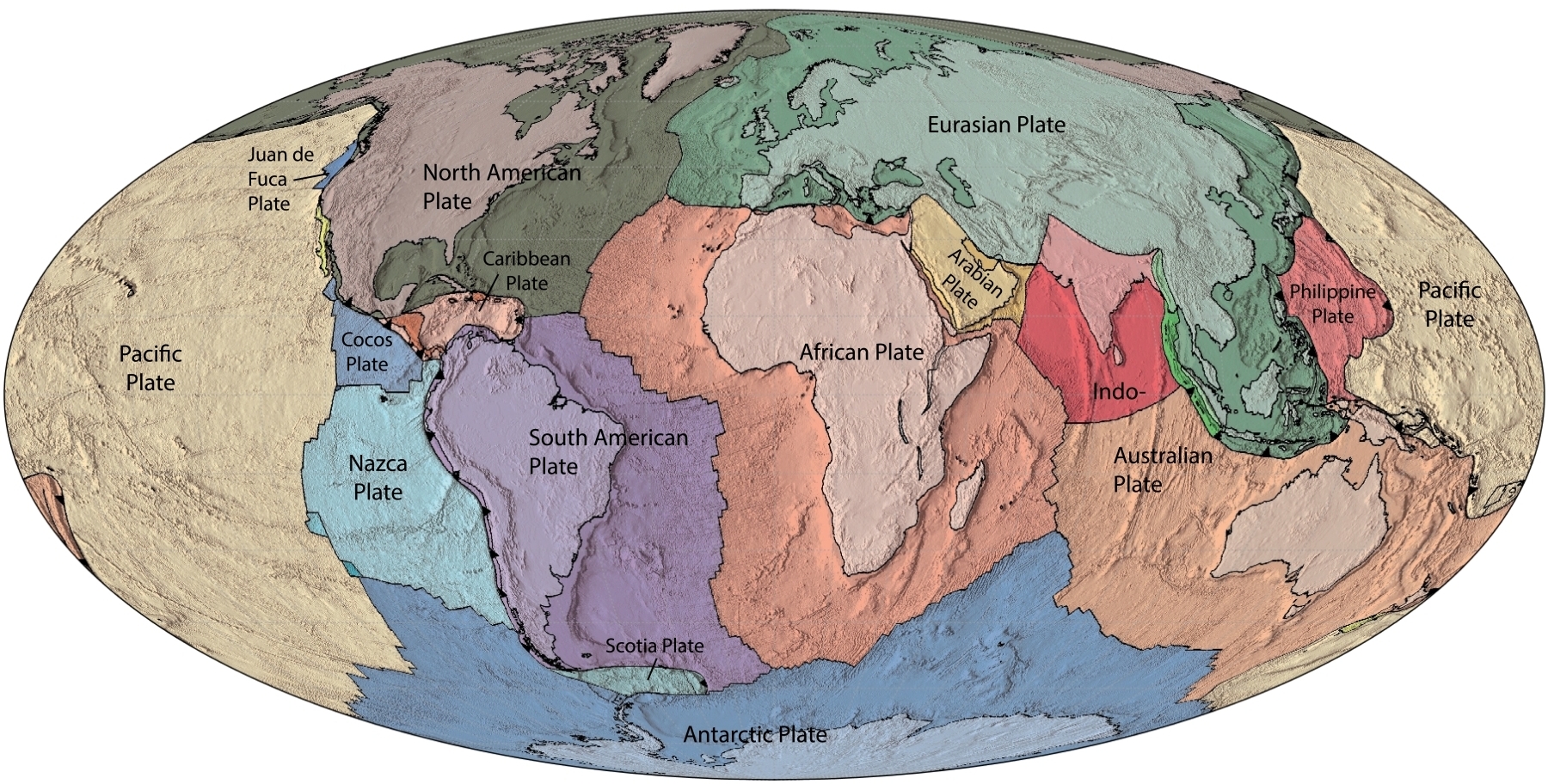 |
The major and minor plates of today’s Earth. Major plates are: Pacific, Nazca, North American, South American, Eurasian, African, Indo-Australian and Antarctic plates; minor plates include: Juan de Fuca, Caribbean, Cocos, Scotia, Arabian, Philippine plates. Ocean ridges and transfer faults (heavy lines) and trenches (lines with teeth on the overriding plate) mark today's active plate boundaries. (click on image for larger version) |
The third block places deformation structures in a plate tectonics context and introduces realistic rheologic behaviors for the lithosphere that combine elasticity and viscosity, such as elastico-viscous behavior. Also, non-linear rheologies are introduced, toward developing a comprehensive crust-mantle rheologic framework for plate tectonics. The treatment offers ample opportunity for more advanced examinations, such as geodynamic modeling approaches and integration with other fields in geology (mineralogy, petrology, geophysics and geochemistry). In three units, the occurrence and meaning of regional deformation structures that were introduced in earlier sections are discussed in the context of extensional, contractional and wrench tectonics.
Blocks and Units |
|
Block I - Frictional Regime |
|
Block II - Plastic Regime
|
|
Block III - Plates and Tectonic Settings
|
| Additional Materials |
INFORMATION FOR USERS
Chapters are updated on an annual basis, as needed, while minor editing (such as typos) is done regularly. Each Unit consists of a Chapter and Supplementary Materials, with the latter containing complemenatary information that may be useful (such as descriptions of terms, readings) and further explorations in the area.
| A (crude) language translation function using Google Translate is included in each chapter, using a drop-down box. The translation engine may struggle with professional terminology, but offers a useful, basic narrative in the selected language. |
Layout and Use
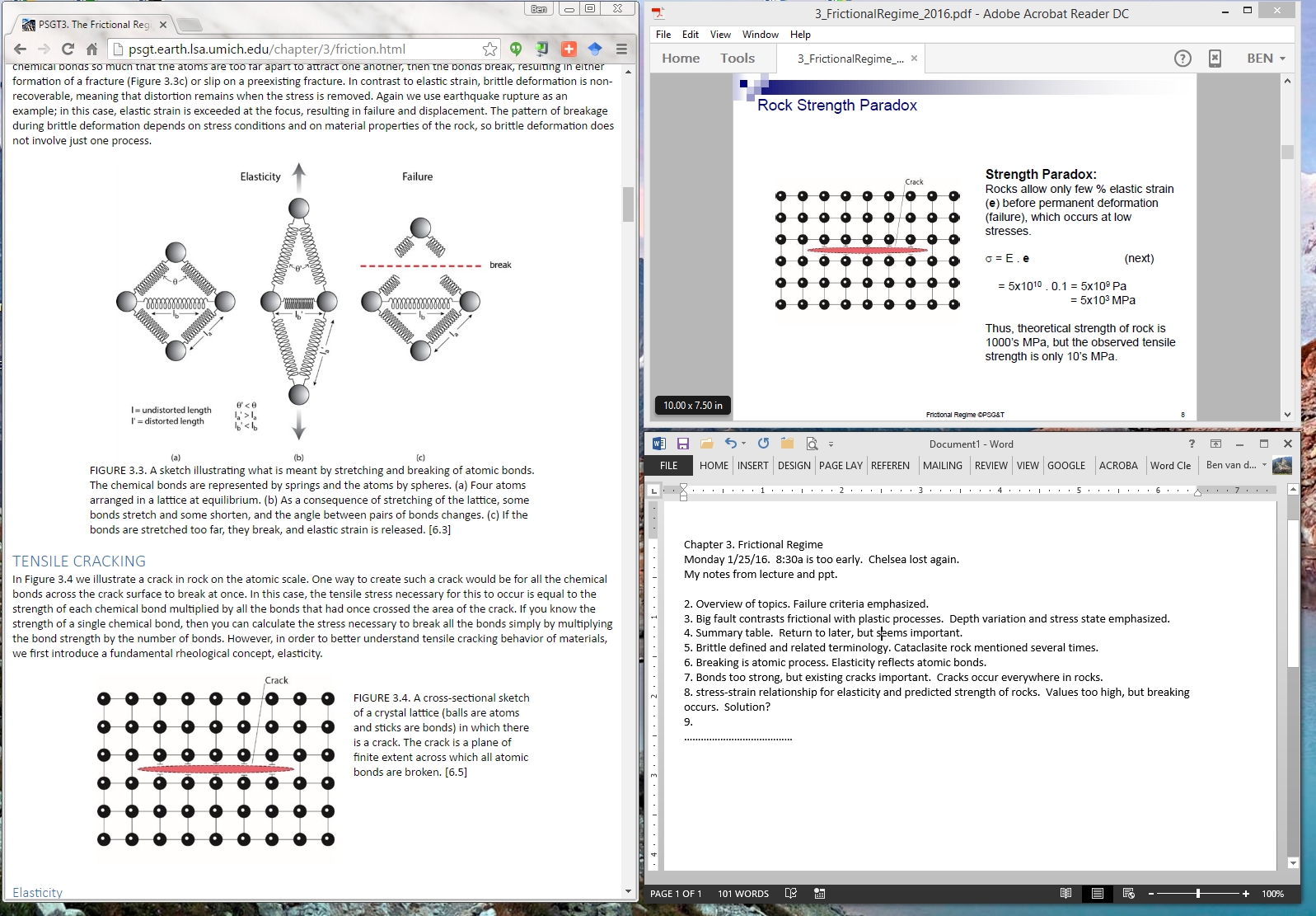 |
The material works for standard screens, but also as a narrow window on desktops and smaller portable devices in landscape mode, supporting the parallel use of text and external annotation programs (such as Word, Evernote). Alternatively, a website markup environment, called Hypothes.is (free, open-platform), can be used for annotation; see description below. Figures are embedded, but also available as stand-alone jpgs for greater detail and for use in presentations (with acknowledgment to psgt.earth.lsa.umich.edu). The text is designed to scale to smaller tablet and smartphone screens, including portrait mode, with similar enlarged figure capability through a native <view image> command. |
Annotation
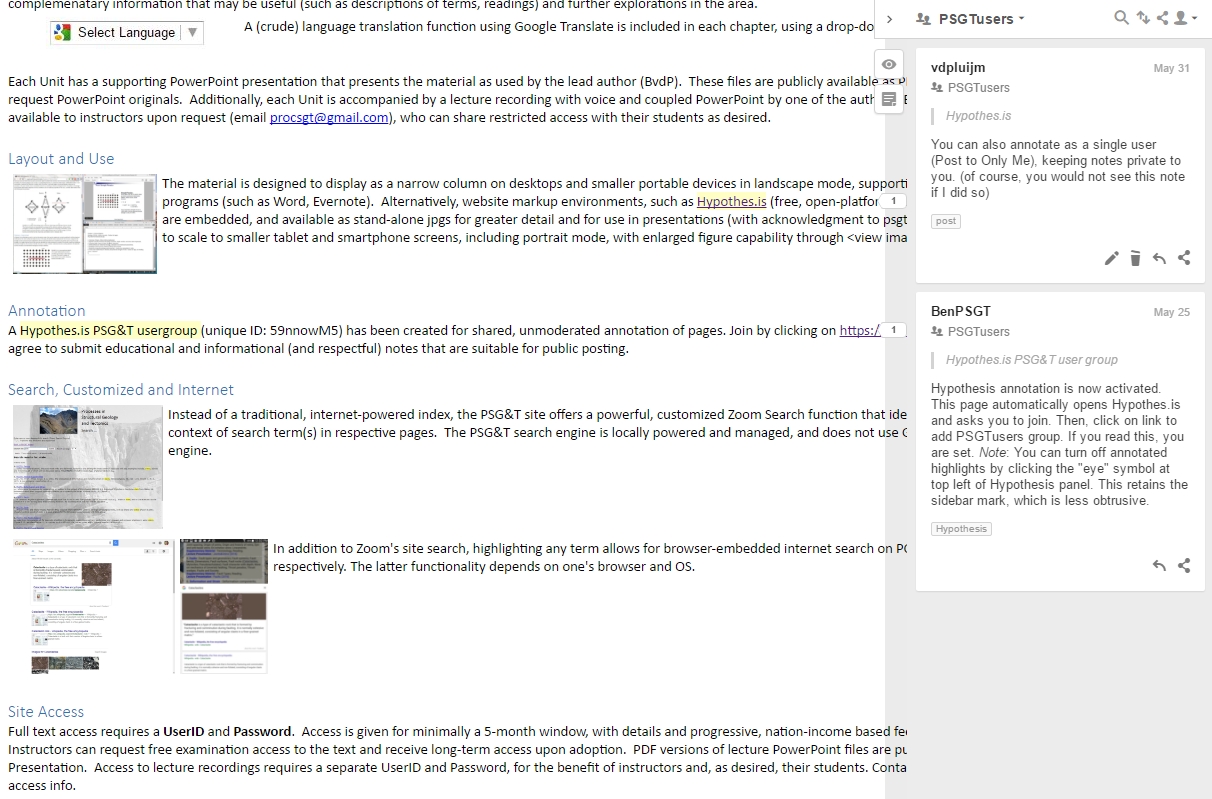 |
A Hypothes.is PSG&T usergroup (unique ID: 59nnowM5) has been created for shared, unmoderated annotation of pages. Join this usergroup by clicking on https://hypothes.is/groups/59nnowM5/psgtusers. Users agree to submit educational and informational (and respectful) notes that are suitable for public posting, as the group is unmoderated (for now). |
Search, Customized and Internet
FAQ
A range of commonly asked questions are answered on the Frequently Asked Questions page.
ABOUT THE AUTHORS
 Ben van der Pluijm is Bruce R. Clark Collegiate Professor of Geology and Professor of the Environment at the University of Michigan-Ann Arbor. He is (co-)author of numerous research articles and editor/board member of several international journals and organizations. His research focuses on crustal fault rocks and processes, architecture of collisional belts, intraplate deformation, microstructures and textures, and applications of geochronology and geochemistry to structural geology, with field areas around the world. His second interest area is Societal Resilience, dealing with planet-human interactions. Educational and public outreach activities include learning technologies and lectures on geology, global change and resilience.
Ben van der Pluijm is Bruce R. Clark Collegiate Professor of Geology and Professor of the Environment at the University of Michigan-Ann Arbor. He is (co-)author of numerous research articles and editor/board member of several international journals and organizations. His research focuses on crustal fault rocks and processes, architecture of collisional belts, intraplate deformation, microstructures and textures, and applications of geochronology and geochemistry to structural geology, with field areas around the world. His second interest area is Societal Resilience, dealing with planet-human interactions. Educational and public outreach activities include learning technologies and lectures on geology, global change and resilience.
Website: https://ben.earth.lsa.umich.edu/
 Stephen Marshak is Emeritus Professor of Geology and Director of the School of Earth Society and Environment at the University of Illinois, Urbana-Champaign. He holds a Ph.D. from Columbia University, an M.S. from the University of Arizona, and a B.A. from Cornell University. He has served as Chair of the Division of Structural Geology and Tectonics of the Geological Society of America. He has written numerous research articles on topics in structural geology and tectonics, and has authored and co-authored other successful books, including Earth: Portrait of a Planet.
Stephen Marshak is Emeritus Professor of Geology and Director of the School of Earth Society and Environment at the University of Illinois, Urbana-Champaign. He holds a Ph.D. from Columbia University, an M.S. from the University of Arizona, and a B.A. from Cornell University. He has served as Chair of the Division of Structural Geology and Tectonics of the Geological Society of America. He has written numerous research articles on topics in structural geology and tectonics, and has authored and co-authored other successful books, including Earth: Portrait of a Planet.
Website: https://goo.gl/yeE5vy.
CODA
I hope that you value this online, process-based approach to Structural Geology and Tectonics, and that is serves the needs of today’s teachers and learners. I am always interested in your feedback and any suggestions that will improve the material and presentation (procsgt@gmail.com).
Ben van der Pluijm
January 2020
v3.x; Last update: 8-may-20
